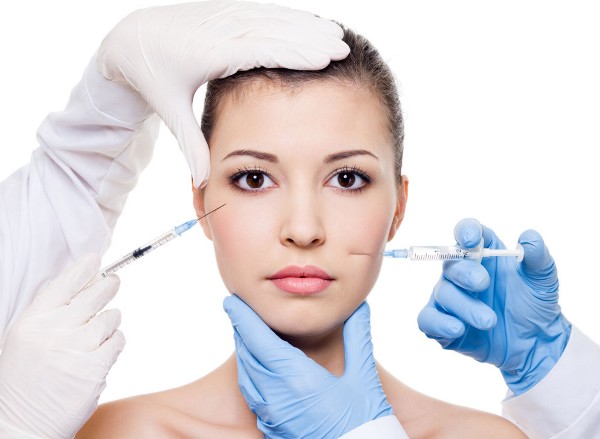Botox vs. Dysport: Controversial Study Picks Best Wrinkle Smoother

The anti-wrinkle treatment Dysport works better than its older, more popular rival, Botox, at least on certain parts of the face, researchers say.
The two drugs faced off in a recent study designed to figure out which drug could best smooth out crow's feet wrinkles that extend from around the eyes on the temples of the face. Participants had one side of their face injected with Dysport and the other with Botox.
Dysport proved superior at reducing signs of crow's feet wrinkles when participants contracted their facial muscles as much as they could. In addition, two-thirds of the participants preferred the results on the side of the face treated with Dysport. Neither the researchers nor the patients knew which side received which treatment.
However, more head-to-head studies are needed to see whether the favorable results of Dysport hold up over the long term. And it's not known whether Dysport will have an advantage when used on other parts of the face, the researchers say.
In addition, some argue the study design may favor Dysport.
In some cases, the products may case serious side effects, including problems swallowing, speaking or breathing, and symptoms of botulism, including muscle weakness , according to the companies' websites.
The study was published today (June 20) in the journal Archives of Facial Plastic Surgery. The study solicited funding from both Allergan Inc., which manufactures Botox, and Medicis Aesthetics, the manufacturer of Dysport. However, it was funded solely by Medicis Aesthetics. The study's lead author is a consultant for and owns stock in Allergan and Medicis Aesthetics.
Sign up for the Live Science daily newsletter now
Get the world’s most fascinating discoveries delivered straight to your inbox.
Wrinkle wars
Botox and Dysport contain a slightly different chemical variation of botulinum toxin, a protein produced by the bacteria Clostridium botulinum. The drugs are thought to work in the same way, by blocking nerve signals to the muscles, thus relaxing them. Botox was approved by the Food and Drug Administration for treatment of wrinkles between the eyes (forehead wrinkles) in 2002, and Dysport was approved for the same use in 2009.
Botox is by far more commonly used than Dysport, said Dr. Brian Glatt, a plastic surgeon with a private practice in Morristown, N.J., who was not involved with the new study. Even so, previous studies have suggested the products are about equally effective when used on wrinkles between the eyebrows, Glatt said.
To test their effectiveness in smoothing out other wrinkles , the new "split-face" study, led by Dr. Corey Maas, a plastic surgeon in San Francisco, Calif., involved 90 participants with an average age of 54.
Doctors and patients were asked to rate the severity of the crow's feet wrinkles on a scale of 0 (no wrinkles) to 4 (severe wrinkles), both at the time of the injection and one month later.
Based on the scores, Dysport had an advantage over Botox in reducing signs of wrinkles when patients contracted their muscles, as one would during smiling. When patients' muscles were at rest, there was not a significant difference between the scores.
Dosage issue
The researchers used three times as much Dysport as they did Botox said Dr. Gary Monheit an associate clinical professor of dermatology at the University of Alabama at Birmingham, who was not involved in the work. Earlier studies conducted by the FDA used less Dysport, in a ratio of 2.5 to 1. Since either of the products will have an increased efficacy if the dosage is increased, the researchers, whether they intended to or not, may have "stacked the deck" in favor of Dysport, Monheit said.
An earlier study that used a higher dosage of Botox than the one in this study found Botox was the better of the pair, he said. "Dosage thus is a predominating factor in determining efficacy in both products," Monheit said.
"To me, they're all practically the same," he said of the products. There is no established dose conversion between Botox and Dysport, according to Allergan.
When contacted for comment about the study's results, Allergan said the difference in score between the products during muscle contraction was small, just 0.2 points on the 5-point scale. The company said it's unlikely this difference is relevant in terms of patients' results. They added the study was small and "not grounds to base a claim of superiority."
Some say Dysport could get a boost in use as a result of the findings. "I think this study has the potential to lead more people to try Dysport in this area," around the eyes, Glatt said.
Glatt uses both products in his practice, but will be using Dysport more frequently now, he said, though whether he continues using it will depend on his patients' satisfaction with the wrinkle treatment.
Pass it on: Dysport may be more effective at reducing crow's feet wrinkles than Botox.
Editor's note: This article has been updated with comments from Allergan Inc.
- 4 Common Skin Woes, and How to Fix Them
- 10 Medical Myths that Just Won't Go Away
- Anti-Aging Skin Treatments: What Really Works?
Follow MyHealthNewsDaily staff writer Rachael Rettner on Twitter @RachaelRettner.

Rachael is a Live Science contributor, and was a former channel editor and senior writer for Live Science between 2010 and 2022. She has a master's degree in journalism from New York University's Science, Health and Environmental Reporting Program. She also holds a B.S. in molecular biology and an M.S. in biology from the University of California, San Diego. Her work has appeared in Scienceline, The Washington Post and Scientific American.










